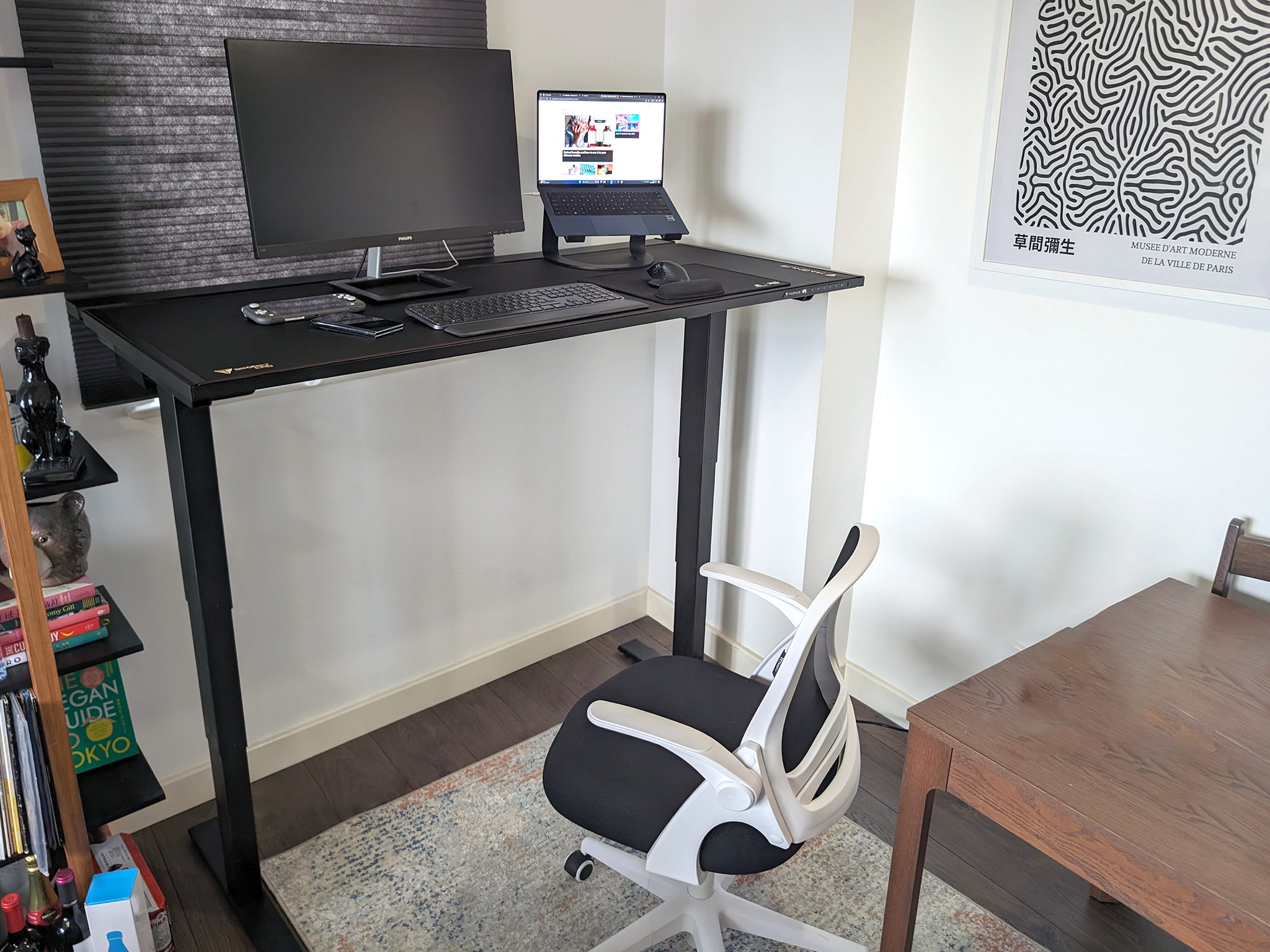


There’s overwhelming evidence of the ill effects of spending too long in a seat. Sit-stand desks, which were once thought to be a wacky work practice, are now believed to be key in helping us live longer, healthier lives.
With flexible working continuing to be the norm, more people are looking to outfit their workspace with a designated standing desk that can help them move from one posture to another throughout the day, without interrupting workflow.
So, let’s think about what you might need from a standing desk. Firstly, it’ll need a good height range, so you can accommodate everyone who might be using it, from children to adults. For taller users, the desk needs to be stable, especially at the upper limits of its height range – a lot of inferior tables will begin to wobble when raised and you begin to type or write, which is never good for productivity.
Desks will have different mechanisms to go up and down, and you need that movement to be smooth and fluid, so you can alter the height easily and quickly and transition between standing and sitting, without it affecting your work focus.
Finally, you’re going to need the desk to be workable, and that means providing enough room for laptops, workbooks, monitors, maybe some house plants, as well as some standing files or an open A4 notebook or diary, without it feeling like you’re playing a game of desktop Tetris.

We worked at all these desks for an extended period, to get an idea of how functional they were throughout the working day – whereas before we would sit at our desks and then take regular breaks to stand, while taking a call, for example, the usage was now reversed and we would stand for the majority of the time and then occasionally sit down to take a break.
We needed a desk that would be able to transition quickly, so we weren’t struggling to alter the height while also fielding a call or doing some other work task. We were also mindful of whether the sit-stand mechanism would start to lag or whether any other problems would be thrown up with extended use.
Ease of assembly was assessed, and for the basic functionality of the desktops, we applied the cup of coffee test, which looked at how likely we were to spill our obligatory morning brew and cause carnage because the desk was too cramped.